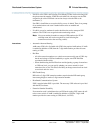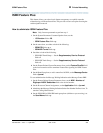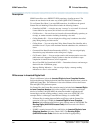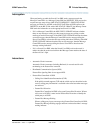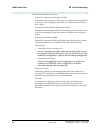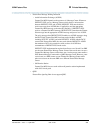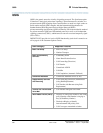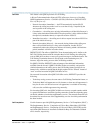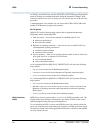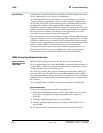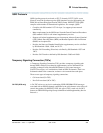
QSIG B Private Networking
Administration for Network Connectivity
CID: 77730 555-233-504 — Issue 1 — April 2000
362
Tandem switch information
However, in the case of tandemed calls (calls involving two ISDN trunks that are not
both administered for Supplementary Service Protocol B), trunk group administration
may override both incoming name and number information, as long as doing so does
not lower the restriction on the information. For example, a tandemed call that comes
in with restricted name information is sent out with restricted name information even
if the outgoing trunk is administered for presentation unrestricted. However,
non-restricted data is sent restricted if the trunk group administration is set for
“presentation restricted.”
ISDN numbering formats
Numbering is specified on the ISDN Public-Unknown-Numbering and/or ISDN
Private-Numbering forms. The numbering form you use depends on how you
administer the ISDN trunk group Numbering Format field.
However, if you format the Called Party Number with public numbering, the
Calling/Connected Party Number is created in the public format even if you specify
“private” on the ISDN trunk group form. This provides the caller or called party a
number that can be used to reach the other party. Since the call routes through the
public network, the public Calling/Connected Party Number is a more accurate
address.
Call Forwarding
(Diversion)
Call Forwarding works over a QSIG network.
When a call has already been forwarded 3 times over a QSIG trunk, it is not
forwarded again but instead terminates at the final forwarded-to terminal. Remote
activation and deactivation of this feature are not supported.
Call Transfer QSIG Call Transfer is based on the current DEFINITY ECS Transfer and
Trunk-to-Trunk Transfer features. QSIG Transfer signaling occurs as long as one of
the calls involves a QSIG trunk between the two switches.
Once a call is transferred, the transferring switch is unnecessary. Additional Network
Feature-Path Replacement (ANF-PR) is invoked automatically to connect the
transferred call more efficiently in the private network. QSIG Call Transfer attempts
to connect the two parties more efficiently and drops the unnecessary switches.
When you use this feature, you see no difference between QSIG Call Transfer and the
standard DEFINITY ECS Transfer or Trunk-to-Trunk Transfer features.
QSIG Call Transfer differs from DCS Call Transfer in that additional call information
is available for the connected parties after the transfer completes.
Depending upon QSIG Identification Services administration, the connected parties’
displays show each other’s name and/or number. If the name and number are not
available, the display of a connected party updates with the name of the involved
trunk group.



